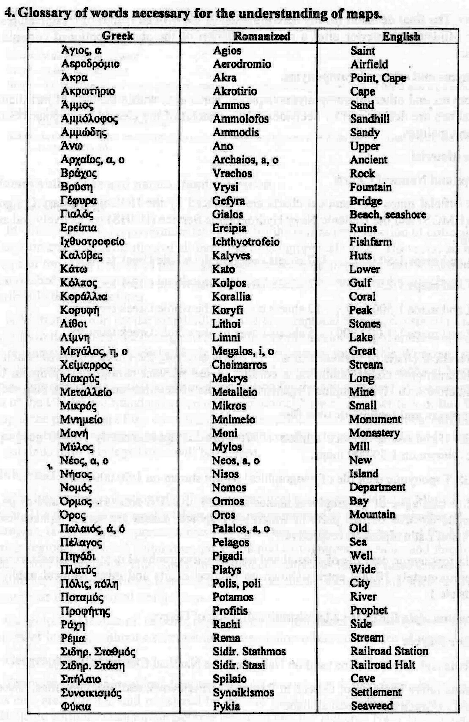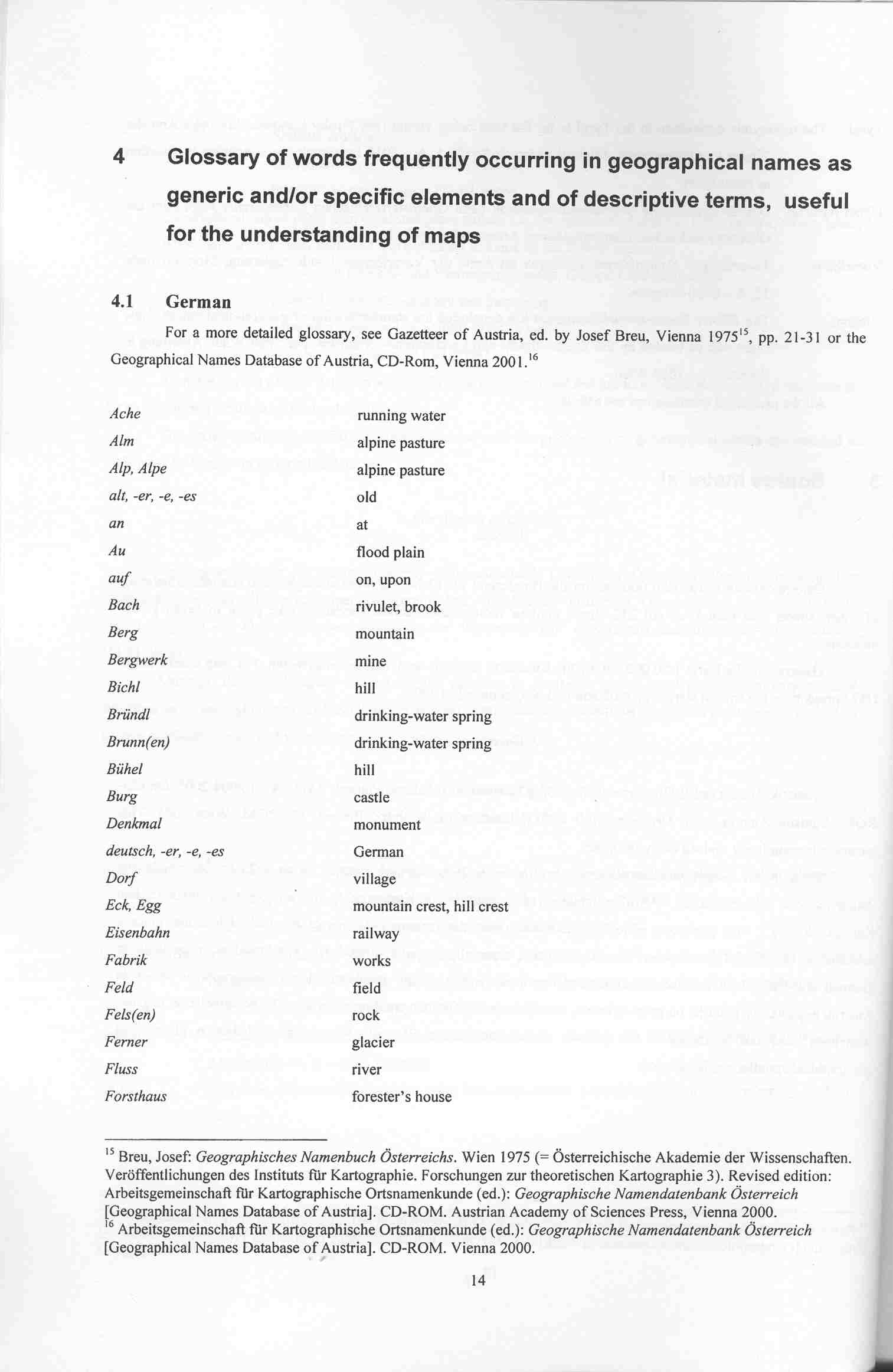8. The scope of Toponymic Guidelines - 5. Source materials & 6. glossary
5. Source materials
-
Which documents – in the form of maps and gazetteers - are available to check the correct, standardized, official form of any geographical name?
-
In the Austrian guidelines, the Austria Map 1:50,000 and the Gazetteer of Austria already referred to are reiterated. An additional official gazetteer, the regularly updated Ortsverzeichnis 1971, is mentioned as being exhaustive for the names of inhabited places.
6. Glossary*
-
A glossary of generic as well as frequently occurring specific (determinative) elements – like adjectives of colour and dimension, the points of the compass, etc. – should be included, ideally in each of the occurring languages, so that their correct spelling is safeguarded.
-
To foreign users, toponymic glossary also adds meaning to the otherwise opaque geographical names.
*See definition in UN Glossary
An example: Glossary of Greece

The Austrian glossaries contain:
-
Geographic-topographic generics
-
Adjectives of age (old, new)
-
Adjectives of colour (black, white)
-
Adjectives of dimension (large, small)
-
Adjectives of situation or relative position (rear, fore, middle, upper, lower)
-
Adjectives of nationality (Austrian, Croatian, Slovenian)
-
Prepositions (at, on, upon, in, above, between)

Back to the checklist of Toponymic guidelines
|
|
||
|
|
|
|
Home
|
Selfstudy
|
S14:
Toponymical
Guidelines